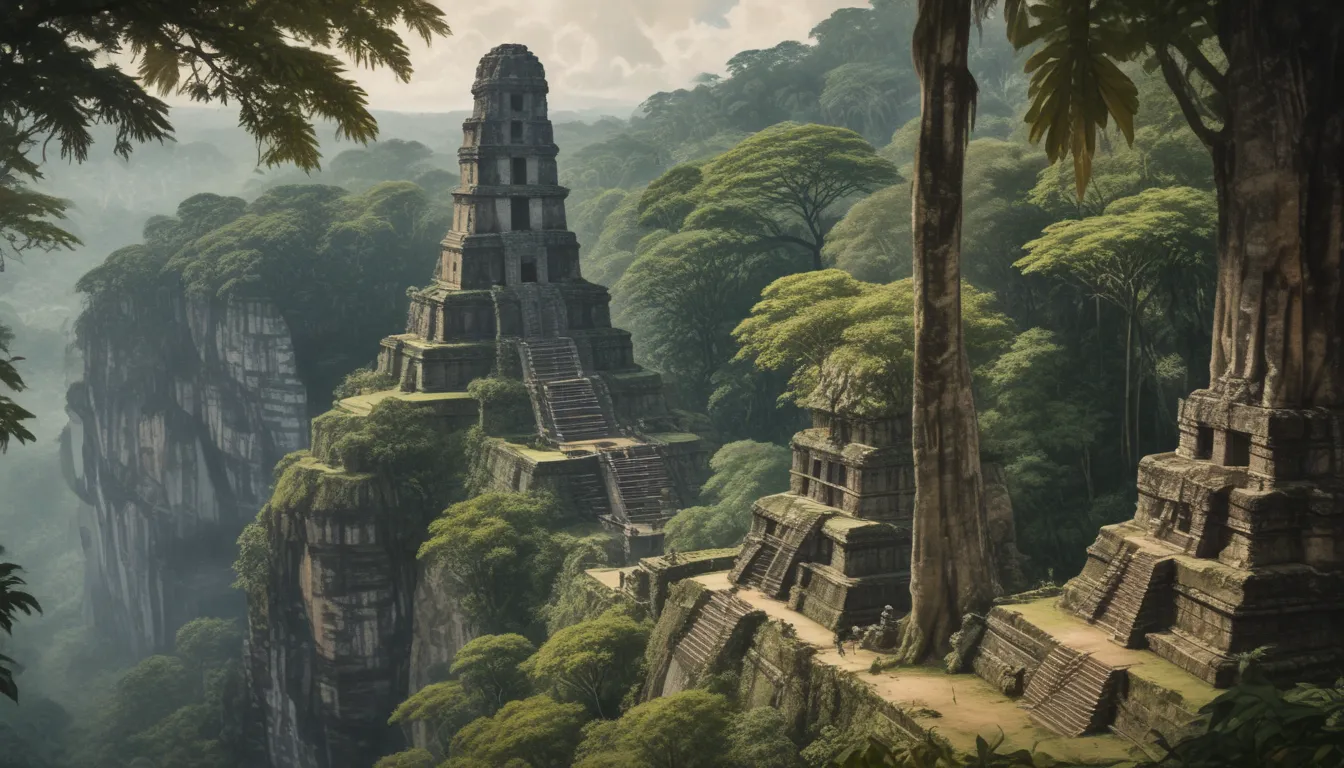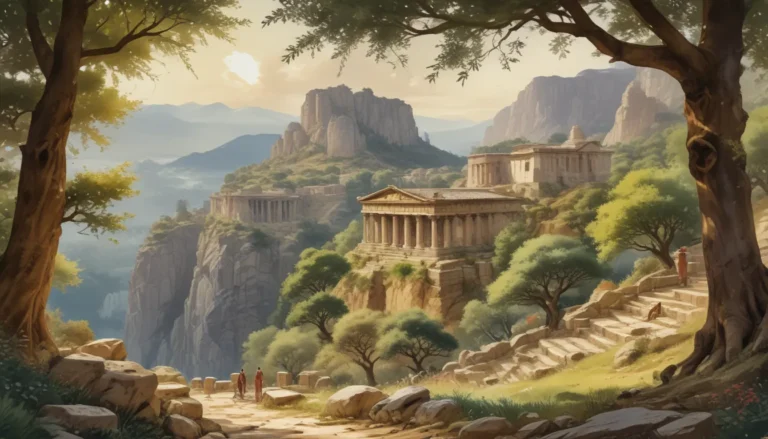The images in our articles are for illustrative purposes only and may not exactly match the content. They are intended to capture your interest and complement the text, not to replace it.
Nestled deep within the lush rainforests of northern Guatemala lies Tikal, an ancient Maya city steeped in history and mystery. With its towering pyramids, intricate carvings, and rich cultural heritage, Tikal offers a captivating glimpse into the architectural marvels and achievements of the ancient Maya civilization. From its discovery by European explorers to its designation as a UNESCO World Heritage site, Tikal continues to mesmerize visitors from around the world.
Unveiling the Splendor of Tikal
Tikal, considered one of the largest archaeological sites of the pre-Columbian Maya civilization, was once a thriving city teeming with life and activity. With a population estimated to be as high as 90,000 inhabitants at its peak, Tikal served as a prominent religious, political, and economic center in the Mayan world. The city’s origins date back to the 4th century BCE, reaching its zenith during the Classic Period between 250 and 900 CE.
Exploring Tikal’s Architectural Wonders
Venturing through the vast grounds of Tikal offers visitors a unique opportunity to meander amongst over 3,000 ancient structures, including temples, pyramids, palaces, and residential complexes. The Temple of the Great Jaguar, also known as Temple I, stands as one of the most iconic structures in Tikal, boasting a towering height of 154 feet. Another notable edifice, the Temple of the Masks (Temple II), adorned with elaborate masks representing the Mayan rain god, Chaac, provides stunning panoramic views of the surrounding jungle.
The Wildlife Oasis of Tikal
Surrounded by a sprawling archaeological park spanning over 222 square miles, Tikal is not only a historical treasure trove but also a haven for diverse wildlife. The Tikal National Park is home to numerous species, including howler monkeys, toucans, jaguars, and ocelots. As visitors explore the park, they can witness the incredible biodiversity of the Guatemalan rainforest and immerse themselves in the natural habitats of these fascinating creatures.
Tikal Through the Ages
With its magnificent Great Plaza serving as the heart of the city, Tikal was a central gathering place for ceremonies and events during ancient Mayan times. The city’s astronomical observatory, the Temple of the Double Headed Serpent, played a critical role in Mayan astronomy, allowing priests to observe celestial movements and align important events with astronomical phenomena. Despite its grandeur, Tikal was abandoned by the Maya around the 10th century CE, leaving behind a legacy shrouded in speculation and intrigue.
A Tapestry of Tradition and Modernity in Guatemala
Tikal’s captivating history and stunning architecture leave visitors eager to explore more of Guatemala’s rich cultural tapestry. From vibrant textiles to colorful festivals, Guatemala offers a wealth of experiences waiting to be discovered. Delving deeper into this Central American gem reveals a country brimming with natural beauty, warm hospitality, and a fascinating blend of ancient traditions and modern life.
Unveil the Mysteries of Tikal
Embark on a journey to Tikal and immerse yourself in its intriguing past, marvel at its architectural wonders, and uncover the secrets of the ancient Maya civilization. Tikal is waiting to transport you to a world of adventure, discovery, and awe.
FAQs – Discover More About Tikal
-
What is Tikal known for?
Tikal is known for its impressive pyramids, temples, and other architectural structures from the ancient Maya civilization. -
How old is Tikal?
Tikal was inhabited from the 6th century B.C. to the 10th century A.D., making it over 2,000 years old. -
Can you climb the pyramids in Tikal?
Yes, visitors are allowed to climb certain pyramids in Tikal for a unique vantage point of the site and surrounding jungle. -
Is Tikal a UNESCO World Heritage Site?
Yes, Tikal was designated as a UNESCO World Heritage Site in 1979 due to its cultural and natural significance. -
Are guided tours available in Tikal?
Yes, guided tours are available in Tikal, offering valuable insights into the history, architecture, and culture of the ancient Maya civilization. -
What is the best time to visit Tikal?
The dry season from November to April is considered the best time to visit Tikal, with pleasant weather and lower chances of rain. -
Are there accommodations near Tikal?
Yes, there are accommodations available near Tikal, ranging from budget-friendly options to luxurious jungle lodges. -
Can you see wildlife in Tikal?
Absolutely! Tikal is situated in the heart of the rainforest, allowing visitors to encounter a variety of wildlife species, including howler monkeys, toucans, and jaguars. -
Is Tikal accessible for people with disabilities?
Efforts have been made to improve accessibility in Tikal, including the construction of ramps and designated paths for wheelchair users. -
Why is Tikal worth visiting?
Tikal offers a unique opportunity to immerse oneself in Mayan history, witness stunning architecture, and experience the awe-inspiring grandeur of the ancient world.
Experience the wonders of Tikal and delve into the mysteries of this ancient Mayan city, where history, culture, and nature converge to create an unforgettable adventure. Whether you’re a history enthusiast, nature lover, or curious traveler, Tikal promises to transport you to a world of wonder and discovery. Explore the splendor of Guatemala’s past and embrace the beauty of Tikal’s timeless legacy.






